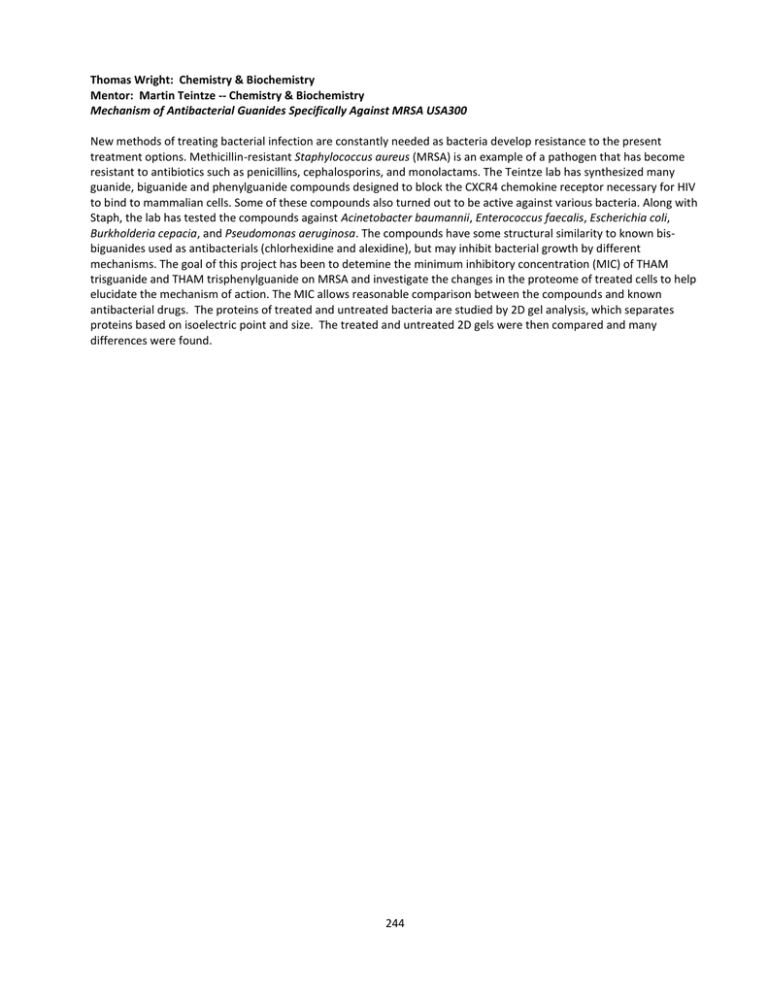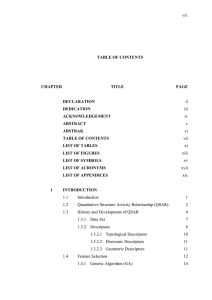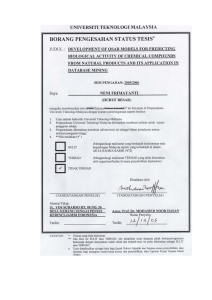New methods of treating bacterial infection are constantly needed as... Thomas Wright: Chemistry & Biochemistry
advertisement

Thomas Wright: Chemistry & Biochemistry Mentor: Martin Teintze -- Chemistry & Biochemistry Mechanism of Antibacterial Guanides Specifically Against MRSA USA300 New methods of treating bacterial infection are constantly needed as bacteria develop resistance to the present treatment options. Methicillin-resistant Staphylococcus aureus (MRSA) is an example of a pathogen that has become resistant to antibiotics such as penicillins, cephalosporins, and monolactams. The Teintze lab has synthesized many guanide, biguanide and phenylguanide compounds designed to block the CXCR4 chemokine receptor necessary for HIV to bind to mammalian cells. Some of these compounds also turned out to be active against various bacteria. Along with Staph, the lab has tested the compounds against Acinetobacter baumannii, Enterococcus faecalis, Escherichia coli, Burkholderia cepacia, and Pseudomonas aeruginosa. The compounds have some structural similarity to known bisbiguanides used as antibacterials (chlorhexidine and alexidine), but may inhibit bacterial growth by different mechanisms. The goal of this project has been to detemine the minimum inhibitory concentration (MIC) of THAM trisguanide and THAM trisphenylguanide on MRSA and investigate the changes in the proteome of treated cells to help elucidate the mechanism of action. The MIC allows reasonable comparison between the compounds and known antibacterial drugs. The proteins of treated and untreated bacteria are studied by 2D gel analysis, which separates proteins based on isoelectric point and size. The treated and untreated 2D gels were then compared and many differences were found. 244





